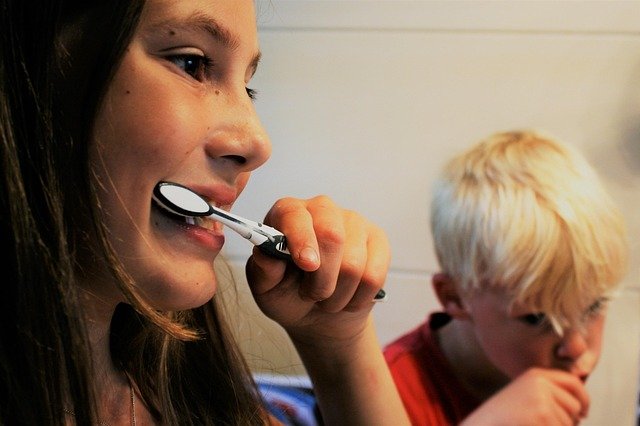AgeSpecific Dental Braces What Children Teens and Adults Should Know
Orthodontic treatment is no longer seen as something only teenagers need. Children, adolescents, and adults in South Africa all consider braces or other orthodontic options for different reasons, from improving chewing and speech to protecting long-term oral health. Knowing how age influences treatment choices can help you discuss realistic options with your dental professional and feel more confident about the process ahead.

AgeSpecific Dental Braces What Children Teens and Adults Should Know
Braces and other orthodontic appliances can improve how teeth fit together, support healthier gums, and make cleaning easier. In South Africa, more families and adults are asking whether there is a right or wrong age to start orthodontic care. The answer is usually not about one perfect age, but about tailoring treatment to the stage of growth, dental development, and overall oral health.
This article is for informational purposes only and should not be considered medical advice. Please consult a qualified healthcare professional for personalized guidance and treatment.
Dental braces for your age group: key information
When people look for dental braces for your age group information, they are often wondering whether problems should be treated now or monitored for later. Orthodontists generally assess three points: how the jaws are growing, whether baby and permanent teeth are in the right places, and whether the bite places too much pressure on certain teeth or joints. These factors vary between children, teenagers, and adults, so treatment plans usually differ by age.
In young children, the focus is often on guiding growth and preventing complications. A child might not need full braces yet, but early assessment can detect crossbites, open bites, or severe crowding. Teens are more likely to receive full braces or clear aligners because most permanent teeth have erupted. Adults, on the other hand, may need treatment that works around existing fillings, crowns, or gum conditions, and this can influence which appliances are recommended.
Dental Braces for Your Age Group: A Guide to growing smiles
Parents often want Dental Braces for Your Age Group: A Guide that clarifies when to schedule the first orthodontic visit. Many dentists suggest an initial assessment around age seven if possible, or earlier if there are obvious concerns like very crowded baby teeth, speech difficulties linked to bite, or jaw asymmetry. At this stage, the orthodontist might simply monitor growth, or recommend simple appliances or splints that guide jaw development.
For teenagers, treatment usually focuses on aligning permanent teeth and correcting the bite. Options typically include metal braces, tooth-coloured braces, or, when clinically suitable, clear aligners. Teen patients in South Africa often juggle school, sports, and social activities, so orthodontists try to coordinate appointments and appliance choices with these demands. Mouthguards can be used with braces during contact sports, and detailed cleaning instructions help protect teeth from decay while brackets are in place.
In South Africa, several organisations and clinics provide orthodontic services that families and adults can explore further.
| Provider Name | Services Offered | Key Features/Benefits |
|---|---|---|
| South African Society of Orthodontists | Specialist orthodontic referral | Directory of registered orthodontic specialists |
| University of Pretoria Oral and Dental Hospital | Orthodontic clinics and training | Academic setting and supervised specialist care |
| Wits Oral Health Centre (Johannesburg) | Orthodontic assessment and treatment | Multidisciplinary dental services |
| Tygerberg Hospital Dental Clinic (Cape Town) | Public dental and orthodontic care | Hospital-based care in the Western Cape |
These examples illustrate the types of orthodontic services that may be available through public institutions, universities, and specialist practices in your area. Availability, waiting times, and specific services can differ between regions and clinics.
Dental Braces for Your Age Group: An Article for adults and long-term care
Dental Braces for Your Age Group: An Article aimed at adults often focuses on practicality and long-term health. Many adults seek treatment after years of living with crowding, spacing, or bite problems. Before starting, an orthodontist will usually check gum health carefully, since periodontal support is crucial when moving teeth in a mature jaw. They may also coordinate with your general dentist to manage fillings, root canals, implants, or missing teeth.
Adults often have more appliance choices but also more lifestyle considerations. Some prefer less visible ceramic braces or, if clinically appropriate, clear aligners that can be removed for meals and brushing. Others accept traditional metal braces because they can be robust and efficient. Treatment times vary depending on the complexity of the case and how consistently instructions are followed, such as wearing elastics or attending regular adjustment visits.
Regardless of age, success depends heavily on daily habits. Good brushing and flossing, fluoridated toothpaste, and regular professional cleanings reduce the risk of decay and gum problems during treatment. In South Africa, patterns of access to care differ between urban and rural areas, as well as between public clinics and private practices. Keeping scheduled appointments and closely following advice from your dental team can help keep treatment on track and avoid unnecessary delays.
After braces or aligners are removed, retainers play a key role in maintaining the result. Teeth naturally tend to shift over time, especially soon after active treatment ends. Children, teens, and adults are usually asked to wear retainers as instructed, whether removable or fixed behind the teeth. This phase is often long term, but it helps protect the time and effort invested in aligning the teeth and improving the bite.
Choosing orthodontic care at any age involves balancing needs, expectations, and practical realities. For a child, that might mean monitoring growth and intervening only when necessary. For a teenager, it may involve coordinating braces with school life and sports. For an adult, it can include planning around work, family, and existing dental treatment. With guidance from qualified dental professionals and consistent home care, people in every age group can work toward a healthier, more comfortable smile that supports overall oral well-being.




